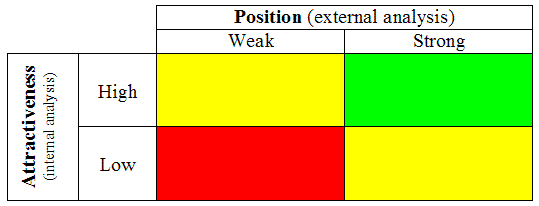|
What do you actually know about your customers?
Undoubtedly, most business-to-business companies can benefit from bringing in key account management. Many have introduced this concept - at least on appearance - yet surprisingly few have based it on essential knowledge about customers.
It takes two to make a good relationship
Looking at the uptake in key account management (KAM), you might think there’s a bit of a bandwagon effect – if others have we it, you have to have it too. KAM definitely has good aspects but before you plunge yourself into it, it’s not a bad idea to consider whether your customers even want a closer relationship.
With whom would you like closer relations?
You may think this is a simple question. Almost by definition, you would think that closer relations to your biggest customers is paramount.
Yet, it’s not always so. Are big customers always the most profitable ones? Not necessarily, because they may have obtained such pricing terms that, over time, they are less important.
Instead, consider these three key factors when evaluating a customer makes from a key account perspective...
Financials (e.g. potential, profitability, growth, etc.)
Strategy (e.g. target group, requirements, needs, etc.)
Profile (e.g. approach, image, etc.)
Some of these factors will already be reasonably well known, whilst others may be more abstract. Whichever way, without an assessment based on these factors, it’s very difficult to choose with whom you want closer relations.
Making the assessment operational
The analysis itself is actually pretty straightforward. You start by determining which factors influence the extent to which a customer is interesting.
Once that list is complete, you need to weigh them according to relative importance. How great an influence does each factor have?
In this connection, it’s usually most practical to end up including 6 - 8 of the most important factors. Once the factors have been selected, and their relative weight determined, you assess how each potential Key Account scores on the factors.
This can entail some rather lively discussions, but this ultimately serves to strengthen the decision making process.
Once consensus on each Key Account’s scores has been reached, you only need to multiply the scores with the relative weights. You then end up with a prioritised list over the companies with whom you should seek closer relations.
But what do customers say?
At the end of the day, customers decide whether there are grounds for a Key Account relationship. That’s why it’s crucial finding out what each potential key account would like from their suppliers.
To find out, you need to do a customer analysis. In many ways, this can resemble a customer satisfaction analysis but the objectives are different. Whereas a satisfaction analysis principally looks at the past, a customer analysis should essentially look ahead.
“What would you like - and do you believe we can satisfy your requirements?”
You’ll face two big challenges undertaking such a customer analysis.
(1) Remember to analyse a wide section of relevant people at each potential Key Account
(2) Ensure that their responses are frank and open and not just polite or politically correct.
That’s why it’s a good idea to have independent experts undertake the customer analysis.
By comparing the internal and external analyses, you can segment potential Key Accounts according to a matrix:

You should consider carefully Key Account candidates in the yellow field, but avoid Key Account candidates in the red field; you can sell to the “reds”, but they are not sufficiently attractive or interested in becoming Key Accounts.
Note that, if you had not carried out both the internal and external analysis, you’d risk an unsuccessful Key Account implementation on these “red” candidates, and that would lower your chances of success with Key Account Management overall.
At Clarity, we help you apply fact-based marketing by providing insight into markets, customers, and competitors.
If you'd like to know more about how we do this, and how we might be able to help you with optimising your distribution channels or other marketing issues, just call us now at 0870 745 6899 or fill in the form below to arrange an initial free-of-charge consultation:
Get more info now:
Go to overview of Clarity Techniques
Go to Clarity Cases in point
|
|

